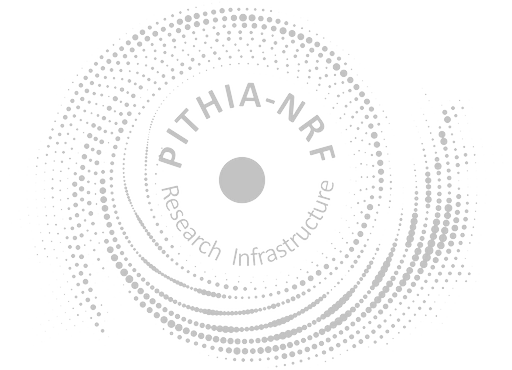<?xml version="1.0" encoding="UTF-8"?>
<Project xmlns="https://metadata.pithia.eu/schemas/2.2" xmlns:xsi="http://www.w3.org/2001/XMLSchema-instance" xmlns:xlink="http://www.w3.org/1999/xlink" xmlns:gmd="http://www.isotc211.org/2005/gmd" xmlns:gco="http://www.isotc211.org/2005/gco" xsi:schemaLocation="https://metadata.pithia.eu/schemas/2.2 https://metadata.pithia.eu/schemas/2.2/pithia.xsd">
<identifier>
<PITHIA_Identifier>
<localID>Project_OE_EPB_detectionTool</localID>
<namespace>oe</namespace>
<version>1</version>
<creationDate>2023-07-03T11:44:00Z</creationDate>
<lastModificationDate>2023-07-03T11:44:00Z</lastModificationDate>
</PITHIA_Identifier>
</identifier>
<name>EPB_detectionTool</name>
<shortName>EPB_Tool</shortName>
<abstract>
The Equatorial Plasma Bubbles (EPB) detection tool is a method to identify the occurrence and its main observables (duration, depth of the depletion and the total disturbance)
with data gathered from receivers of Global Navigation Satellite System (GNSS). This method adapts a previously existing technique to detecte Medium Scale Travelling Ionospheric
Disturbance (MSTIDs), which focuses on the second derivative of the total electron content (TEC) estimated from GNSS signals.
</abstract>
<description>
</description>
<URL>
</URL>
<documentation>
<Citation>
<gmd:title><gco:CharacterString>Improved characterization and modeling of equatorial plasma depletions</gco:CharacterString></gmd:title>
<gmd:date>
<gmd:CI_Date>
<gmd:date><gco:Date>2018-08-22</gco:Date></gmd:date>
<gmd:dateType>
<gmd:CI_DateTypeCode codeList="" codeListValue="">Publication Date</gmd:CI_DateTypeCode>
</gmd:dateType>
</gmd:CI_Date>
</gmd:date>
<gmd:identifier>
<gmd:MD_Identifier><gmd:code><gco:CharacterString>
doi.org/10.1051/swsc/2018026
</gco:CharacterString></gmd:code></gmd:MD_Identifier>
</gmd:identifier>
<gmd:otherCitationDetails>
<gco:CharacterString>
E. Blanch, D. Altadill, J.M. Juan, A. Camps, J. Barbosa, G. González-Casado, J. Riba, J. Sanz, G. Vazquez, and R. Orús-Pérez, Improved characterization and modeling of equatorial plasma depletions. Journal of Space Weather and Space Climate, vol. 8, issue A38, 22 August 2018.
</gco:CharacterString>
</gmd:otherCitationDetails>
<onlineResource>
<gmd:CI_OnlineResource>
<gmd:linkage><gmd:URL>https://doi.org/10.1051/swsc/2018026</gmd:URL></gmd:linkage>
</gmd:CI_OnlineResource>
</onlineResource>
</Citation>
</documentation>
<keywords>
<MD_Keywords xmlns="http://www.isotc211.org/2005/gmd">
<gmd:keyword><gco:CharacterString>Ionosphere</gco:CharacterString></gmd:keyword>
<type><MD_KeywordTypeCode codeList="#pr1" codeListValue="Observed Region"/></type>
</MD_Keywords>
</keywords>
<keywords>
<MD_Keywords xmlns="http://www.isotc211.org/2005/gmd">
<keyword><gco:CharacterString>Ionospheric Specification</gco:CharacterString></keyword>
<type><MD_KeywordTypeCode codeList="#pr1" codeListValue="Miscellaneous"/></type>
</MD_Keywords>
</keywords>
<keywords>
<MD_Keywords xmlns="http://www.isotc211.org/2005/gmd">
<keyword><gco:CharacterString>Slant Total Electron Content</gco:CharacterString></keyword>
<type><MD_KeywordTypeCode codeList="#pr1" codeListValue="Products"/></type>
</MD_Keywords>
</keywords>
<relatedParty>
<ResponsiblePartyInfo>
<role xlink:href="https://metadata.pithia.eu/ontology/2.2/relatedPartyRole/PointOfContact"/>
<party xlink:href="https://metadata.pithia.eu/resources/2.2/individual/oe/Individual_OE_Segarra"/>
</ResponsiblePartyInfo>
</relatedParty>
<relatedParty>
<ResponsiblePartyInfo>
<role xlink:href="https://metadata.pithia.eu/ontology/2.2/relatedPartyRole/DataProvider"/>
<party xlink:href="https://metadata.pithia.eu/resources/2.2/organisation/pithia/Organisation_OE"/>
</ResponsiblePartyInfo>
</relatedParty>
<status xlink:href="https://metadata.pithia.eu/ontology/2.2/status/OnGoing"/>
</Project>

